
Everyone has seen how hard-working ants are. What food gives them the energy to lift such large chunks and what do ants like to eat? A closer look shows that the countless species have different preferences.
In a nutshell
- rarely omnivores, species mostly specialized on certain food
- Food Spectrum: Honeydew, plant sap, seeds, small prey, carrion, fungi, food
- stockpile, breed lice for honeydew, prey among other species of ants
- Foraging within a radius of up to 30 m, communal hunting
contents
- 10 amazing facts about foraging
- Food choice is species specific
- Eating our best-known species
- frequently asked Questions
10 amazing facts about foraging
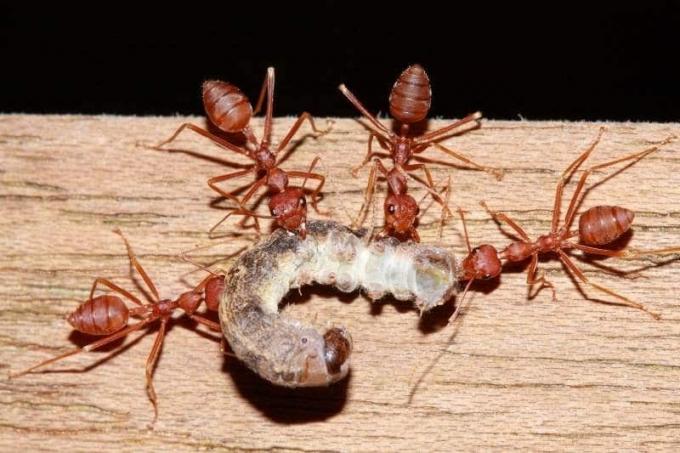
- Some of the workers specialize in gathering food. They feed the entire colony with the fodder they bring in.
- The search for food usually takes place in the vicinity of the burrow, in a radius of up to 30 m.
- Several ants always go together to hunt prey. Many thousands of animals are even involved in a so-called swarm hunt. The so-called Swarm intelligence the quickest route to the best feed.
- Ants use their antennae to smell fat, protein, and sugar.
- Ants mark the way to a large, rewarding food source with colony-typical pheromones.
- Ants store food in the headboard. If you meet a hungry ant along the way, choke it out for her.
- The ant bites its prey and then injects poisonous formic acid into the wound. The smell of the formic acid also attracts other ants that help carry the prey into the burrow.
- Some species of ants keep them lice actually as livestock. They milk their honeydew by massaging the animal's abdomen with their feelers. In return, they protect them from predators and let them spend the winter with them.
- Ants lug everything they can into the burrow and stock up on it.
- Some species of ants eat carrion, but this must be fresh. Insects that are already badly decomposing (smelly) are ignored.
Food choice is species specific
The food spectrum of the ant family, which consists of more than 20,000 species, includes various animal and plant foods as well as fungi. Since the species populate a wide variety of habitats, spread across almost the entire globe, they have developed their own special dietary habits that allow them to survive. Only a few species are practically omnivores.
Eating our best-known species
leafcutter ant (Atta cephalotes)
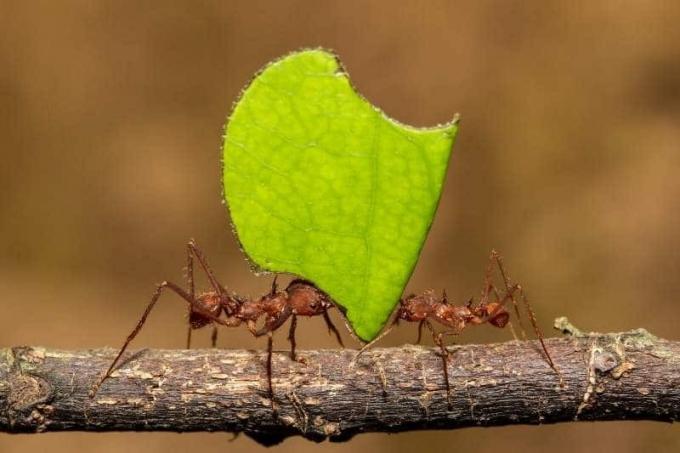
These ants eat mushrooms of the Egerlinge genus, which they grow themselves for this purpose. They cut leaves with their sharp mouthparts and then chew the pieces into a fine substrate. From this they build a spongy structure on which the mushrooms thrive.
Blood Red Robber Ant (Formica sanguinea)

The name predatory ant comes from the fact that this species captures larvae and pupae from other ant species. These serve her partly as food, but also for keeping slaves. But their diet consists mainly of:
- honeydew
- flower nectar
- tree saps
- plant seeds
- insects
Yellow thief ant (Solenopsis fugax)
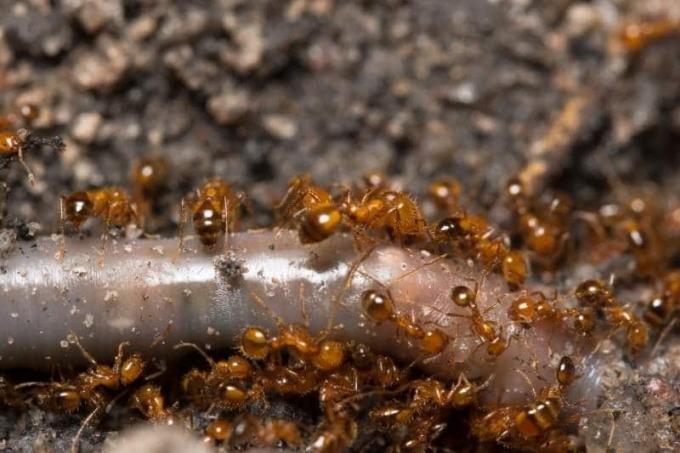
This native Species of the fire ant genus is predatory, even attacking the nests of larger ant species. Their feed includes:
- Eggs, larvae and pupae of other ant species
- small arthropods such as insects, arachnids and mites
- carrion
- Honeydew from subterranean aphids and scale insects
Yellow Meadow Ant (Lasius flavus)
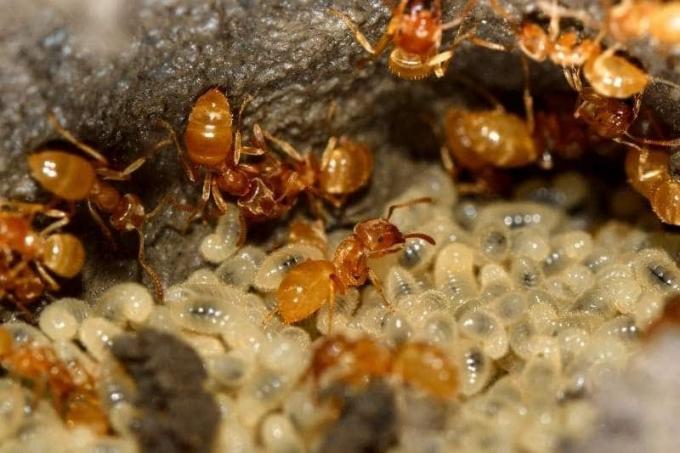
These ants rarely leave their underground nest. Because their food, the honeydew, is "produced" by root aphids that also live in the soil.
Common lawn ant (Tetramorium caespitum)
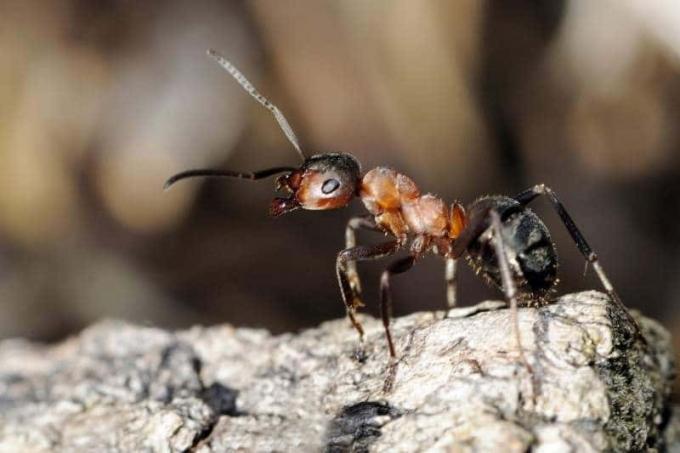
The common lawn ant is a small omnivore, because it eats both plant food, honeydew and seeds, as well as carrion.
Red wood ant (Formica rufa)

This wood ant eats mainly insects, including some so-called forest pests. For this reason, the red wood ant is considered beneficial.
pharaoh ant (Monomorium pharaonis)

With us, this species of ant can only survive because it lives in warm rooms, even in private households. She does not spurn any food, but prefers to eat substances containing sugar and protein.
Black carpenter ant (Camponotus herculeanus)

These ants also like to eat the honeydew excreted by lice. In addition, she licks off plant juices and catches insects.
A notice: Important nutrients such as amino acids are only made available by bacteria. These live symbiotically in the digestive tract of this species of ant, where they receive metabolic products in return.
Black garden ant (Lasius niger)
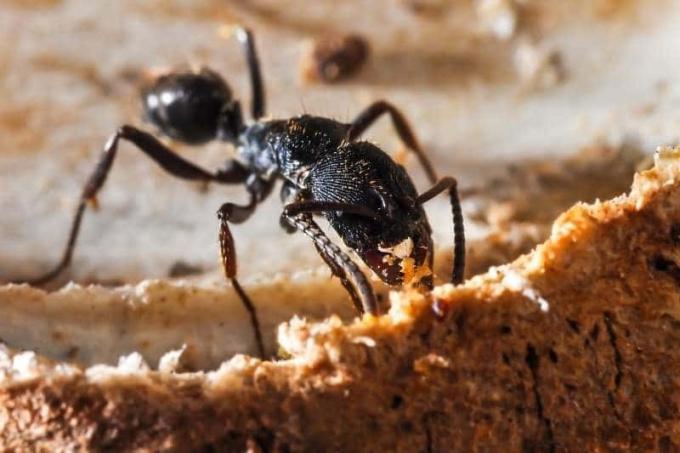
We often encounter black road ants, because they are one of the most common ant species in Central Europe. They feed mainly on honeydew, but also on sweet leftovers when in contact with humans. If both are in short supply, it can also be dead insects. The brown garden ants, which are related to them, also show this eating behavior.
Tip: If you discover black spider ants in the house, you should immediately look for the source and, if necessary, remove it. Initiate control measures, because they can damage supporting wood.
frequently asked Questions
In autumn, the entire ant colony retreats deep into its nest. There the animals fall into rigidity. They survive until spring, although they have not eaten winter fat beforehand, and they do not eat during the winter either.
Yes. Some species, such as pharaoh ants and black-headed ants, can transmit salmonella and other multidrug-resistant germs. There is also a danger for allergy sufferers if they are bitten by an ant while fighting.
The queens of the Dracula ant specialize in their own larvae. They prick her and suck out her juice. However, this cannibalism does not wreak havoc, as the larvae survive anyway.
